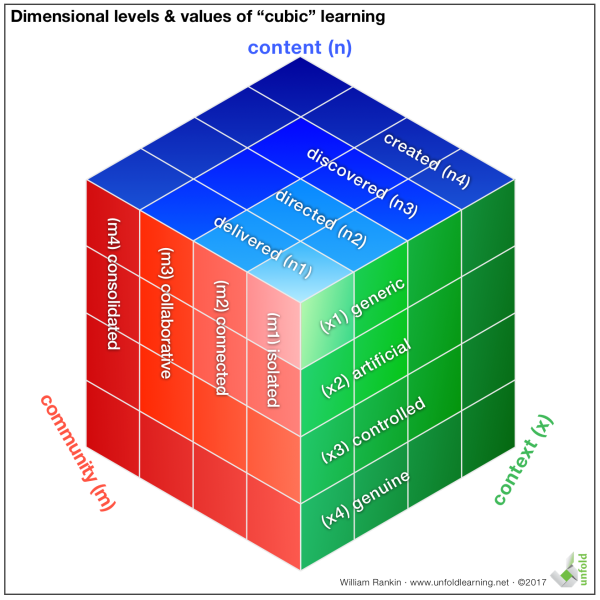
In my preceding posts, I’ve described the dimensional levels of each facet of our “cubic” learning model: content, community, and context. This post (and the next several) will incorporate and build on content from those posts, so if you haven’t yet seen them, you might want to review them before continuing here.
In “cubic” learning, each element’s “dimensionality” increases as the learner becomes more engaged and plays a more central role. The increasing agency, skills, and responsibility learners must demonstrate at each progressive level also means that more and more, they need support rather than direction, individual resources rather than a one-size-fits-all recipe, and companions and partners rather than controllers. More dimensionality means more learner-centered — and learner-driven — learning.
As we’ve seen previously, the dimensional levels of the “cubic” model look like this, with the higher levels increasing the volume of the cube they generate:

While “volume” in this model is something of a metaphor, it’s one backed up by research. For example, as both Anderson and Krathwohl’s revision of Bloom’s taxonomy and Webb’s “depth of knowledge” (DOK) argue, creating content not only requires more ability from learners than recalling, it also increases their learning potential: the deeper level of engagement makes learning more likely to take hold. In other words, moving from recall to creation increases the potential “volume” for learning — and therefore makes a bigger cube in this model.


You must be logged in to post a comment.